Today we were so fortunate to have experienced something that few non-native people have seen or done.
A couple weeks ago we heard that one of the villagers (Mele) was considering building a new outrigger canoe. This is a big deal since the only way to build such a canoe out here where there are few modern tools is the traditional way. You fell a tree, hollow it out while still in the jungle, then drag it out to the water. Well, guess what? Turns out that’s what Mele has been working on for months out on a remote part of the island. Today was the day it was to be dragged out and towed over to the beach where he can work on finishing it. And we, along with the three other boats that are anchored here, were invited to attend.
The event started around 0900. Ann and I were sitting in the cockpit after breakfast enjoying a cup of coffee when we saw some of the villagers gathering on the beach. We jumped in the dinghy and by the time we got close to the beach, they were already paddling out and waved for us to follow. Out of the cove we’re anchored in, around to the right in the next cove we went a couple hundred meters then turned in toward the mangroves. As we were approaching shore all I could think was, “Oh no, we’re not going to fight our way through that!” Just then as we got within about 10 meters, we could see a narrow opening cut through the thick roots and branches. It was just high enough and wide enough to let a dinghy through at high tide. We followed in about 30 meters to a little pool where we tied the four little dinghies to the trees and we able to step onto a rock shelf then into the jungle. Wow, what a way to start!
We immediately set out on a thin trail. It was obvious that Mele had been trodding up and down as he’s been working on the canoe, but it was very thin and not used other than for that purpose. We were on an area of the island not often visited. As we worked our way inland and uphill, we could see that he had started felling small trees to use as “rollers” to get the canoe out. These were typically about 4 inches thick and cut about six feet long and placed on the trail about every 15 feet. Hmm, this is getting interesting.
We progressed up in a single line – about 6 palangis and 6 Fijians until about ½ mile inland and a couple hundred feet up, I heard a hush up ahead and exclamations of surprise and amazement. As Ann and I climbed over the last bit of volcanic rock we were scrambling up, we saw it. A huge log that had been hewn to the shape of a canoe sat in the jungle just ahead of us amidst a pile of wood chips.
The canoe was carved from a single tree, the lower trunk of which was easily three feet in diameter. The bows were gracefully carved and the inside was roughly hollowed out. Mele showed us how he had used an axe and an adze to carve the tree, one blow at a time chipping some wood here, some there for months. It was 25 feet long and weighed about 1000 pounds (that was the consensus guess among us – it took almost a dozen people to move it).
So, here’s this amazing sight sitting ½ mile in the jungle away from the water. How are we going to get it into its new element? Well, you drag it. And no one brought a rope! No problem, Mele said it would be better to drag it with traditional rope. He cut a large tree vine. It was about 30 feet long and 1 inch thick. Then he made a couple notches inside the bow of the canoe and cut a small tree branch to fit athwartships between the notches, around which he tied the vine with a double overhand knot. I looked at it and thought, “Yeah, right. I’m not pulling that too hard just to see it break and all of us fall down the hill”. But you know it held all the way out.
So, how do you turn a 25 foot canoe in the jungle? You cut down the small trees around it so you can turn it downhill, that’s how. Once turned downhill with the path lined with the aforementioned logs that the canoe can roll over, eight of us pulled the rope and a couple pushed with one guy on the back end who kind of rocked it and steered it and off we went. Sometimes it was a little scary as the 1000 or more pound beast starting coming down on us on its own volition, but most of the time we pulled as hard as we could to get it going. On the steeper parts we looped the vine uphill from the canoe to keep it from going down too fast. After 20 or 30 meters, we would stop, go back and get the “rollers”, walk them up in front of the canoe and start the process all over again. About half way to the water, reinforcements showed up. Fresh and ready to go the new recruits brought lots of laughter, teamwork and even singing and by noon we made it to the water.
Once in the water, we all towed the new roughed out canoe back to the beach where Mele will work on it for some time yet completing the shaping, adding topsides, a deck (he’s already started carving it back up on the hill and will have to drag that down sometime too) and finally an outrigger.
Of course once this was all done, everyone returned to the village for what else? Kava. Yes, there will be lots of kava consumed this night to mark such an auspicious event. We even brought a bundle in and presented it to Mele to thank him for allowing us to be part of this day as well as to bless his new canoe. He was very pleased and clapped his hands three times which is how they say “thank you” here in Fiji.
You read about this stuff in museums and books but to take part of it we agreed was stunning. We are all in a bit of a haze just trying to process what we just witnessed – or rather – were a part of. (We found out in the village that only the men get to partake in this activity…oops, no one told Ann-good thing!)


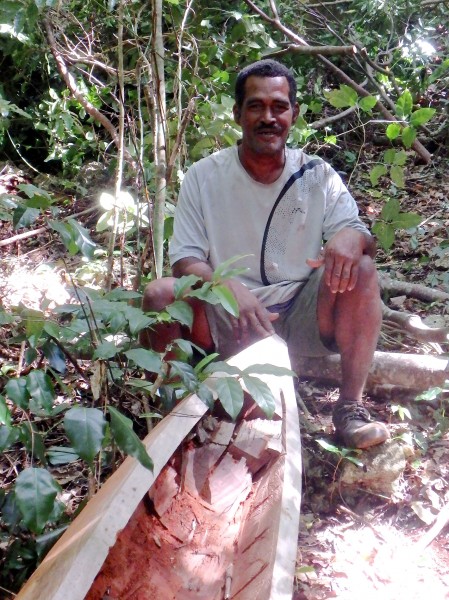

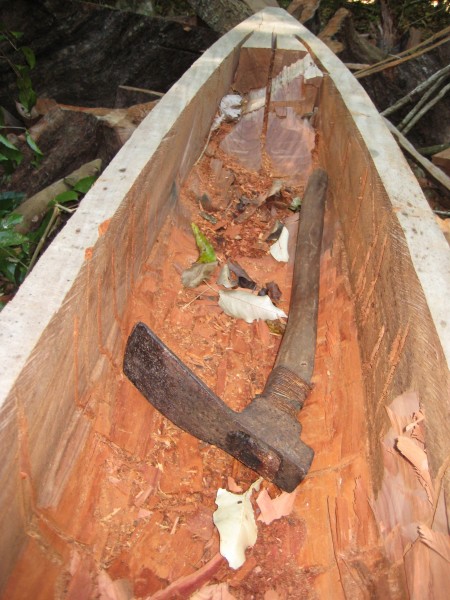
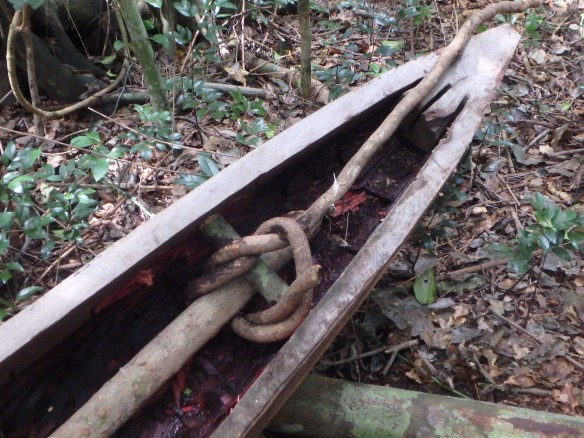
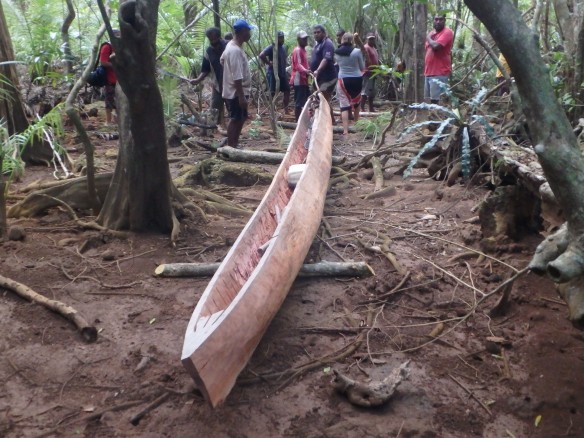
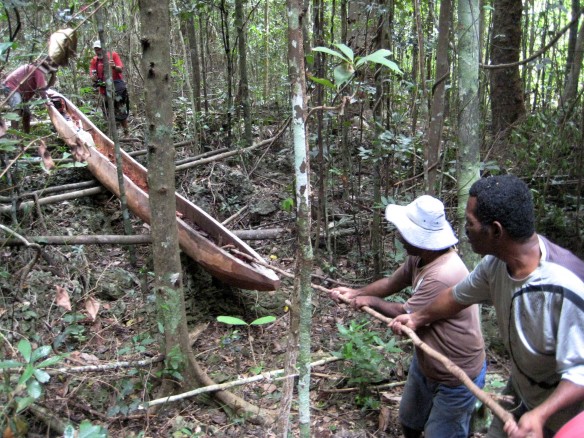
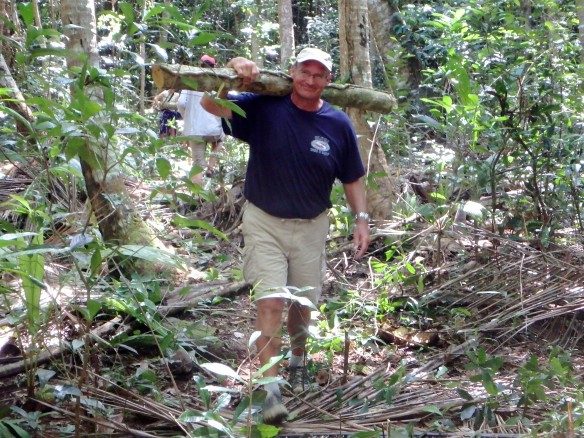
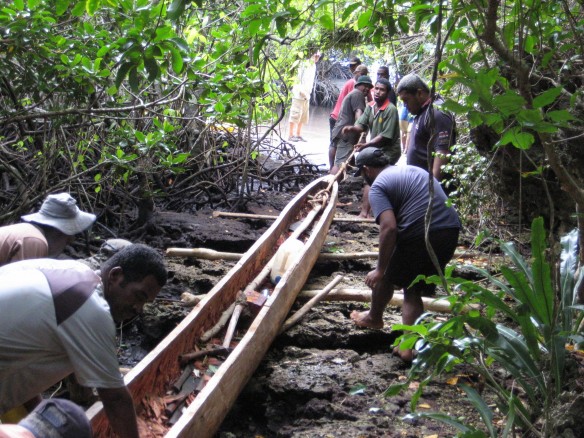
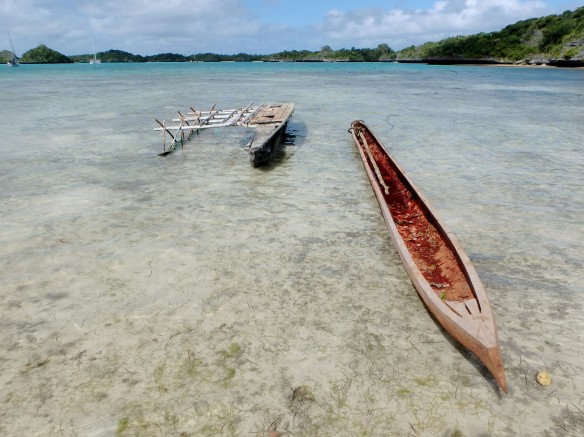
Wow! Very cool! I wouldnt tell Ann either! So there must be fresh water on the island? I am assuming there is no running water, etc….how do they manage? xxoo J